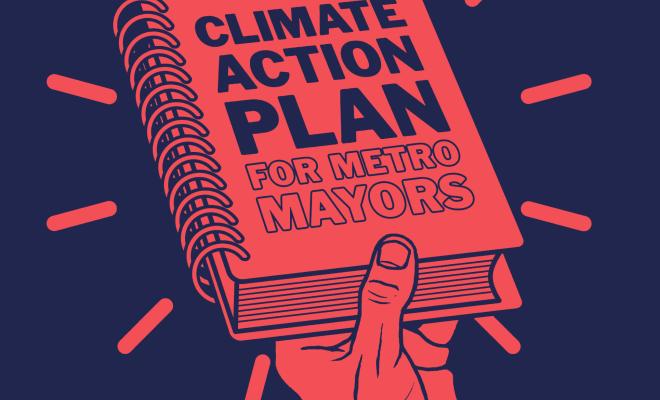21 Aug 2025
What can the next Mayor do for people and planet?
We're facing a climate and ecological emergency – the biggest threat we’ve ever seen to humanity’s existence. Whoever is elected as the next Mayor of London can’t single-handedly solve the crisis, but they must use the powers they have to make as big a difference as possible. They have a very important role to play in providing a guiding vision for the area, and will need to work with councils, businesses, local communities and the national government.
London has had a Zero Carbon London plan in place since 2018 and has since set an ambitious target to achieve net zero carbon by 2030. In Climate Emergency UK’s Council Climate Action Scorecards, which assessed all UK councils on the actions they've taken towards net zero, the Greater London Authority (GLA) achieved the joint highest score for combined authorities (although the GLA’s powers and resourcing aren’t directly comparable to Mayoral Combined Authorities). But even where commitments have been made, such as to create more green jobs and roll out housing retrofit, the delivery urgently needs to be accelerated. This Climate Action Plan will help the next Mayor do this using the devolved powers and funding granted to them.
How green is London?
10 priorities for the next Mayor
- Decision making: ensure all plans, programmes and investment decisions are in line with what’s needed to address the climate and ecological emergency and are aligned with international, national, regional and local carbon reduction targets. This includes through divesting all pension funds the Mayor and GLA are responsible for from fossil fuels.
- People: set up and actively promote forums to ensure that the voices of those most impacted by climate breakdown and nature loss – including disabled people, people of colour and people on low incomes – are heard and given centre-stage in decision making.
- Green jobs and skills: rapidly increase the number of skilled green jobs, and protect workers and communities through a just transition to a low-carbon, nature-rich, circular economy. This includes creating opportunities for young people to develop green skills and linking skills training to attractive, well-paid, low-carbon jobs.
- New housing: use the London Plan and other powers to ensure new housing is zero carbon and served by sustainable transport. Use brownfield regeneration and affordable housing funding to deliver zero-carbon homes in locations with good public transport links and opportunities for active travel, while protecting the green belt from development.
- Retrofitting homes: take a leading role in bringing existing homes in the area up to high energy efficiency standards (at least EPC C) to reduce emissions and put an end to fuel poverty. Ensure that existing homes are protected from extreme weather events.
- Transport: reduce road traffic by 25% by 2030 to achieve net zero targets. This can be achieved by significantly increasing cycling and walking, moving to 20 mph speed limits on all residential side roads and in town centres, and working with operators to ensure that public transport services are reliable, affordable and better connected.
- Energy: commit to a low-demand, decentralised supply of energy in the London Energy Plan. Increase the supply of clean, renewable energy, including supporting the goal of 1,000 community energy projects by 2030 and the roll-out of heat pumps.
- Nature: declare a biodiversity emergency. Ensure that the Local Nature Recovery Strategy (LNRS) for the area increases tree cover, protects and enhances nature so that 75% of protected wildlife sites are thriving by 2042, eliminates green space deprivation, and helps the area become more resilient to the impacts of climate change.
- Waste: commit to making London a zero-waste city, with no compostable or recyclable waste sent to landfill or incineration. Lead the development of a circular economy strategy with local businesses and local authorities to both drastically cut waste and resource consumption and boost the green economy.
- Air quality and water: work with businesses and communities to ensure that interim World Health Organization (WHO) air quality guidelines are met by 2030 and that water consumption is cut by 30% by 2050.


